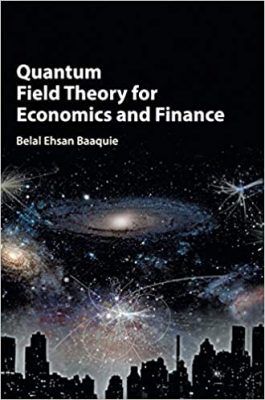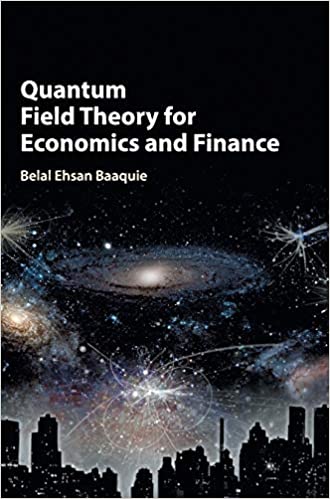 Editor: Belal Ehsaan Baauie
Editor: Belal Ehsaan Baauie
Publisher: Cambridge University Press – 690 pages
Book Review by: Nano Khilnani
In his Synopsis, the author of this book Professor Belal Ehsaan Baaquie explains that quantum field theory was initially developed to describe indeterminate and random phenomena, be they classical or random in origin.
He writes that while quantum field theory typically explains the phenomena of high energy physics, condensed matter and solid state physics, the common thread of these applications was that the quantum system has a large number of degrees of freedom (independent variables)
Quantum field theory is not tied to quantum physics, but instead has a wide range of applications in many fields. The ground-breaking developments of quantum field theory – such as explaining the phenomena of high-energy physics, condensed water, and solid-state physics as explained above – brought to the forefront what can be called quantum mechanics.
So what is quantum mathematics? It is a system of mathematical concepts that arise in quantum systems. Some of such leading mathematical concepts are the following:
- Correlation functions
- Feynman path integrals
- Hamiltonians
- Langrangians
- Operators
- Quantum fields
- State spaces
- Vacuum expectation values
Here is an important matter to remember:
The interpretation of quantum mathematics, in general, does not have any relation to physics, and instead, needs to reflect the specificity of the domain inquiry to which quantum mathematics is being applied.
Many books on quantum field theory are written for specialists in theoretical physics, or for professional theorists or researchers, or for those seeking to read about applications in high energy theory or phenomenology, or for those seeking explanations to critical phenomena.
This book however, has been written for non-specialists. It provides “a quick and concise introduction to quantum field theory,” as the author explains. We name below the titles of its 25 chapters within its four Parts. There are also introductory parts, explaining the organizational outline of this book and an answer to the question “What is a quantum field?” We trust you will find this book useful and easy to learn from.
- Synopsis
- Organization of the book
- What is a quantum field
- Part I – Introduction
- Quantum Mechanics
- Classical Field Theory
- Accelerator Action
- Option Theory*
- Path integral and asset prices
- Part II – Linear Quantum Fields
- Scalar quantum field
- Dirac spinor field
- Photon gauge field
- Forward interest rates’ quantum field *
- Risk interest rates’ quantum fields *
- Bonds: Index-linked stochastic coupons *
- Part III – Nonlinear quantum fields
- Operator expectation and S matrix
- Nonlinear scalar field: Feynman diagrams
- Renormalization–function fixed points
- Renormalization group and phase transitions
- Effective action
- Nonlinear interest rates’ quantum fields *
- Simulation of nonlinear interest rates*
- Interest rate range accrual swap*
- Part IV – Two-dimensional quantum fields
- Two-dimensional quantum electrodynamics
- Bosonic string theory
- Futures asset prices
- Epilogue
This is an unusually high-ranking book on Amazon, meaning that many people have bought it, and continue to buy it. We feel you’ll find this book useful.
Editor:
Belal Ehsaan Baauie is a professor at the International Centre for Education in Islamic Finance. He received his training in theoretical physics at Caltech and Cornell University, specializing in quantum field theory. He later developed an interest in finance and economics, and started applying quantum mathematics to these fields.
He has written two books on quantum finance: Quantum Finance (Cambridge University Press, 2007) and Interest rates and Coupon Bonds in Quantum Finance (Cambridge University Press, 2009), in addition to several other books focusing on topics from quantum mechanics and mathematics to books on leading ideas in science.







